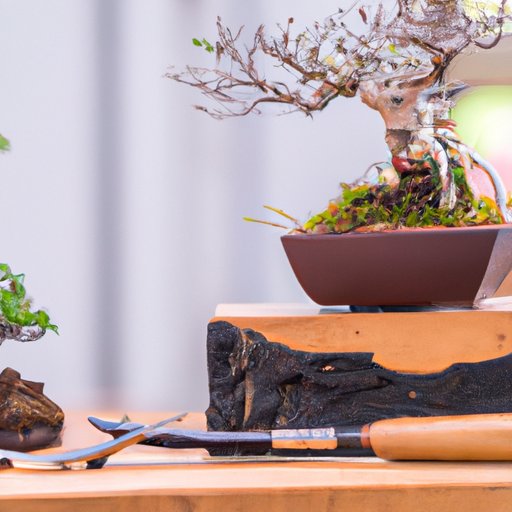Introduction
Bonsai trees are miniature trees grown in containers that are designed to replicate the beauty of a mature tree in nature. Bonsai trees are a type of art form that dates back centuries, and they have become popular in many parts of the world. Starting a bonsai tree is not difficult, but it does require some research and knowledge about the different types of bonsai trees and their specific care requirements. This article will provide an overview of the steps for starting a bonsai tree.
Research the Different Types of Bonsai Trees
The first step in starting a bonsai tree is to research the different types of bonsai trees that are available. There are many different species of bonsai trees, and each one has its own set of requirements for optimal growth. It is important to consider the climate and location where the bonsai tree will be kept before selecting a species. A good way to learn more about bonsai trees is to read books or online articles about them.

Choose a Suitable Species for Your Climate and Location
Once you have a better understanding of the different types of bonsai trees, you can begin to narrow down your choices. Consider the size, shape, and color of the leaves when selecting a species. Some species are better suited to certain climates and locations than others, so make sure to select one that will thrive in the environment where the bonsai tree will be kept.
Purchase or Create a Bonsai Pot
The next step is to purchase or create a bonsai pot. The pot should be the right size and shape for the species of bonsai tree that you have chosen. Make sure that the pot is suitable for the species and that it has adequate drainage holes.
Obtain Appropriate Bonsai Soil
When starting a bonsai tree, it is important to use soil that is specifically designed for bonsai trees. These soils are usually made from a combination of organic materials such as peat moss, compost, and sand. The soil should be well draining and should not contain any fertilizers or chemicals.

Plant the Tree and Prune It
Once the pot is ready and the soil is in place, the bonsai tree can be planted. Prepare the root ball by removing old soil and trimming any damaged roots. Once the root ball is ready, place it in the pot and fill in the gaps with bonsai soil. Prune the branches and roots as needed to help the tree take shape.
Style the Tree with Wires and Pots
The next step is to style the bonsai tree. This can be done by using wires to shape the branches and leaves. The pot can also be changed to create the desired appearance. Different pots can be used to create different shapes and sizes.

Care for the Bonsai Tree Regularly
It is important to care for the bonsai tree regularly. Water the tree often and fertilize according to the recommended schedule for the species. Other care instructions may include misting the leaves, repotting, and pruning. Pay close attention to the specific care instructions for the species of bonsai tree that you have chosen.
Conclusion
Starting a bonsai tree is a fun and rewarding experience. With the right research and knowledge, anyone can begin to grow a beautiful bonsai tree. Following the steps outlined in this article, you can begin to learn the basics of bonsai tree care and start your own bonsai tree. As you continue to care for your bonsai tree, you can continue to learn more about bonsai tree care and enjoy the beauty of your bonsai tree for years to come.
(Note: Is this article not meeting your expectations? Do you have knowledge or insights to share? Unlock new opportunities and expand your reach by joining our authors team. Click Registration to join us and share your expertise with our readers.)
